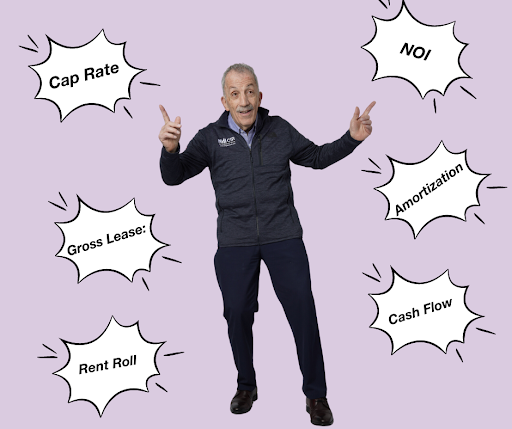
Navigating the world of commercial real estate can be complex, whether you’re an investor, a property manager, or a business owner looking to expand your operations. Understanding the key terms in this field is crucial to making informed decisions and maximizing your investments. Here are 25 important terms to know:
- Cap Rate (Capitalization Rate): A metric used to assess the return on investment of a property, calculated by dividing the net operating income by the property’s current market value.
- Net Operating Income (NOI): The total revenue generated from a property minus the operating expenses, excluding taxes and interest.
- Gross Lease: A lease agreement where the landlord covers all property expenses, including taxes, insurance, and maintenance.
- Triple Net Lease (NNN): A lease agreement where the tenant is responsible for property taxes, insurance, and maintenance, in addition to rent.
- Cash Flow: The amount of cash generated by a property after all expenses are paid, including mortgage payments.
- Due Diligence: The process of thoroughly investigating a property before finalizing a transaction to ensure there are no hidden issues.
- Equity: The difference between the property’s market value and the outstanding mortgage balance.
- Loan-to-Value Ratio (LTV): A financial term used by lenders to express the ratio of a loan to the value of an asset purchased, typically expressed as a percentage.
- Building Classifications: Categories used to classify buildings based on their quality and amenities, typically Class A, B, and C.
- Escrow: A financial arrangement where a third party holds and regulates the payment of funds required for two parties involved in a given transaction.
- Lease Term: The duration of the lease agreement, which can affect the rental rates and terms.
- Sublease: An arrangement where the original tenant leases out the property to another tenant.
- Common Area Maintenance (CAM): Fees paid by tenants to cover the costs of maintaining shared spaces within a property.
- Tenant Improvement Allowance (TIA): Funds provided by the landlord to the tenant for renovations or modifications to the leased space.
- Amortization: The process of spreading out a loan into a series of fixed payments over time.
- Operating Expenses: The costs associated with running and maintaining a property, including utilities, maintenance, and property management fees.
- Occupancy Rate: The percentage of available rental units in a property that are currently occupied.
- Market Value: The estimated amount for which a property should sell in a competitive market.
- Zoning: Regulations that govern how a piece of land can be used, including the types of buildings that can be constructed and their intended use.
- Property Management: The operation, control, and oversight of real estate, often involving a property manager or management company.
- Rent Roll: A report detailing the rental income and lease terms for each tenant in a property.
- Debt Service Coverage Ratio (DSCR): A measure of the cash flow available to pay current debt obligations, calculated by dividing NOI by the total debt service.
- Build-to-Suit: A commercial property that is designed and constructed to meet the specific needs of a tenant.
- Letter of Intent (LOI): A document outlining the terms and conditions of a lease or sale agreement before finalizing the contract.
- Anchor Tenant: A major tenant in a commercial development, typically a well-known retail chain, that draws customers to the property.
Understanding these terms will empower you to make more informed decisions, negotiate better deals, and ultimately succeed in the commercial real estate market. Whether you’re buying, leasing, or managing properties, a solid grasp of these concepts is essential. For more guidance and expert advice, reach out to The Bill Gladstone Group—your trusted partner in commercial real estate.

